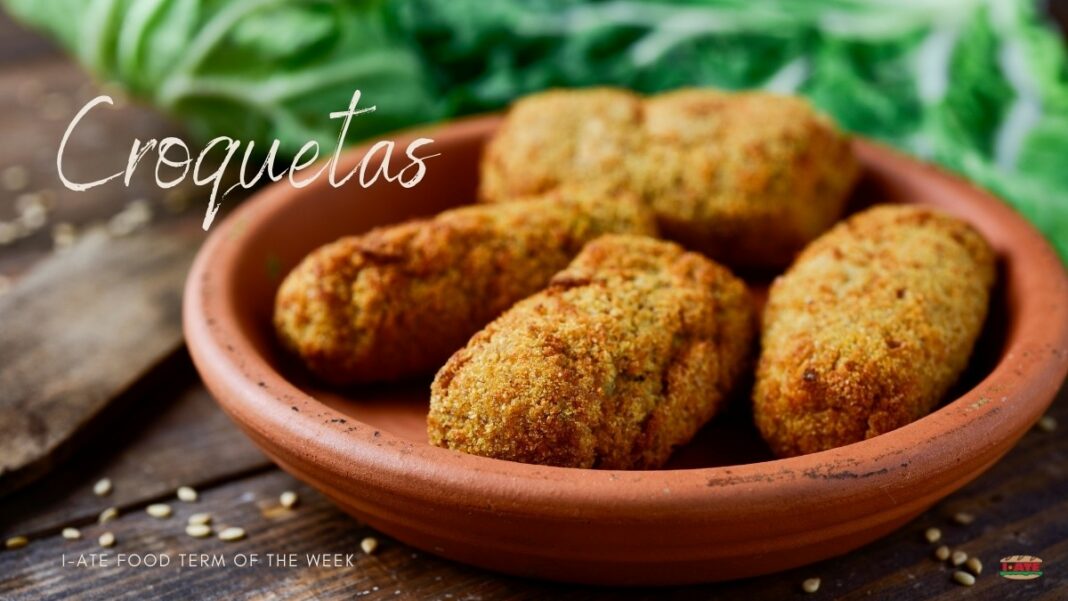Last week, on the 16th of January, food lovers around the world were enjoying tasty treats prepared especially for International Croqueta Day. We hope you had a bite as well!
We are not forgetting about the famous Spanish tapa now that the celebrations are over. On the contrary – we are taking a closer look at the history of the snack loved not only in the Iberian Peninsula. January is a great time to talk about croquetas because they are an ideal winter snack and the very definition of comfort food. Crispy, salty, hot, full of flavour… croquetas simply tick all the boxes.
As it is often the case with tapas, the preparation method varies from region to region and from bar to bar. Family recipes for perfect croquetas are well-guarded secrets of many households as well.
Although the world knows and loves croquetas as the Spanish national culinary treasure nowadays, the origins of the delicious snack lie in the 19th century French cuisine. The name derives from the French verb croquer to which the diminutive suffix -ette is added.
Some sources credit Monsieur Escoffier, known as the father of classical French cuisine, for the original recipe. Others state that the famous chef Marie-Antoine Carême, considered “king of chefs and the chef of the kings”, made it famous by serving his version called croquettes à la royale (royal croquettes) during noblemen’s banquets. In the French version, creamy potatoes were often used instead of the bechamel sauce. We are not sure when and how the recipe for croquettes left France, but we know that it quickly spread around the continent and took the world by storm.
Always made of thick bechamel sauce, breaded and deep-fried, these bite-sized snacks contain various additional ingredients. One of the most popular versions is called Croquetas de Jamón. If you are a big fan of Serrano ham, it can become your personal favourite. Other well-known types of croqueta filling owe their special taste to pollo (chicken), bacalao (codfish), cocido (stew) or pulpo (octopus). Vegetarians prepare croquettes with different types of queso (cheese), espinacas (spinach), setas or boletus (mushrooms). This list could go on forever as Spanish chefs can get very creative with the traditional recipe. Follow their lead! It is never too late to celebrate your own Croqueta Day.
Resources:
Food Lover Tour. 2020. All about Spanish Croquettes. [ONLINE] Available at: https://foodlovertour.com/blog/all-about-spanish-croquettes/. [Accessed 21 January 2021].
Grapevine Properties. 2020. All You Need to Know about Croquetas. [ONLINE] Available at: https://grapevinelifestyle.com/2020/04/24/all-you-need-to-know-about-croquetas/. [Accessed 21 January 2021].
Madrid Food Tour. 2020. Croquetas de Jamón: The Only Spanish Croquettes Recipe You’ll Ever Need.
[ONLINE] Available at: https://madridfoodtour.com/spanish-croquettes-recipe/. [Accessed 21 January 2021].
Spanish Sabores. 2011. Croquetas de Jamón Serrano Recipe – Traditional Spanish Ham Croquettes. [ONLINE]
Available at: https://spanishsabores.com/croquetas-de-jamon-serrano-recipe-ham-croquettes/. [Accessed 21 January 2021].

Written by Magdalena Sikorska. She holds a Bachelor in Italian Language and Literature as well as master’s degrees in Journalism and Social Communication and Polish Philology.

